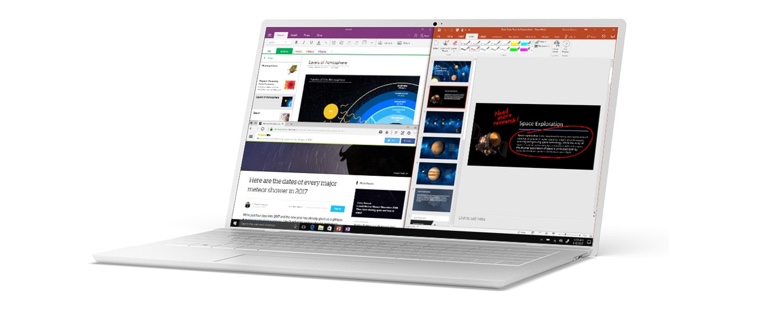Microsoft has a clean slate problem


Microsoft's Surface Laptop debuted with Windows 10 S.
When it became clear that Windows 10 for Phones was chasing Windows Phone, Windows Mobile and Windows CE went gently into that good night. As Microsoft poured resources into supporting Android and iOS, some loyalists questioned the company's commitment to its own champion OS. But that is frankly laughable. Microsoft continues to invest deeply in Windows and devices optimized for it. It has brought it to the futuristic devices such as the Hololens. It continues to refine the user experience on the desktop. And its roadmap continues to evolve.
More Windows 10
But Microsoft's attempts to leave behind legacy components of Windows and its traditional PC associations have had a poor track record. These have included Windows 8, which virtually ignored the desktop in the name of building a new modern and almost completely isolated and foreign touchscreen experience, and Windows RT, which even further relegated the desktop to a nearly immutable environment in which no new applications could be practically installed.
Meanwhile, while Apple was pushing a fresh start (at least versus the Mac) with the iPad, Microsoft 's signature entry into the tablet space was defined by a keyboard cover accessory and interface that made it more like a laptop. The 2-in-1 Surface Pro has become the model for the most viable "tablets" in the Windows world. But in doing so, it's had to cling to the keyboard and trackpad -- literally avoiding a "clean slate,".
Now, Ed Bott reports that Windows 10 S, Microsoft's attempt to more tightly control distribution of Windows apps in the name of performance and security -- an RTesque goal implemented across user interfaces and processor architectures -- may soon be given the axe as a separate distribution of the operating system. Ed captures some of the challenges involved in restoring a Windows 10 S installation.
Ostensibly, Windows 10 S was developed in order to better compete with Chromebooks. Google itself has not made a clean break to bring more functionality to Chrome OS or making Android a more palatable operating system for devices with larger screens, keyboards and pointing devices although Samsung and Huawei have added dedicated desktop modes to their latest flagships. Microsoft landed a big fish when it announced that Apple would be bringing iTunes to Windows 10 S, a win that led me to think Google should consider the same for Chrome. But the Windows Store version of iTunes' arrival was delayed, perhaps canceled.
Particularly given the timing of Windows on Snapdragon, things were getting a little confusing in terms of Windows flavors. Akin to Windows 10 proper, which represented a reconciliation between the worlds of desktop and touch via modes, Windows may include something called an "S" mode.
That would address the complexity of having a separate Windows to deliver the benefits of Windows 10 S. It's tough to see how that would deliver the speed and security of a Windows installation that could be compromised by the sloppiness of code that hasn't passed through Microsoft's official store portal. However, it could allow for the kind of odd exception that Ed needed during his Windows restore.
It's important to note that Microsoft's clean slate problem is a problem only so far as the company keeps trying to make fresh starts and leave behind some nature of the compatibility that has been the operating system's hallmark for decades. If the Windows S rationale has been any indication, it would allow Microsoft to present a more consistent experience and present a competitive advantage versus first-party-store-dominated platforms such as iOS and Android.
How much it would move the needle on those fronts, though, is an open question. As recent history has shown, restricting apps to the Windows store hasn't done much to spur development, particularly in the kinds of apps where Windows lags mobile OSes. And closing loopholes to undesirable apps, at least in organizations, is handled effectively by management tools from Microsoft and others.
PREVIOUS AND RELATED COVERAGE
Microsoft is about to kill off its weirdest Windows 10 experiment
https://www.zdnet.com/article/microsoft-is-about-to-kill-off-its-weirdest-windows-10-experiment/If the rumors are true, Microsoft is about to ditch Windows 10 S. After struggling with this unmanageable operating system recently, I say good riddance.
Windows 10 Mobile: Microsoft just put the final nail in the coffin
https://www.zdnet.com/article/windows-10-mobile-microsoft-just-put-the-final-nail-in-the-coffin/Microsoft finally confirms that Windows Phone won't get more features or phones.
Windows 'Sets' feature keeps tabs on side-by-side apps and websites
https://www.zdnet.com/article/windows-sets-feature-keeps-tabs-on-apps-websites-side-by-side/The new user interface feature being rolled out to some Windows Insider Program participants represents fresh thinking in managing workspaces.